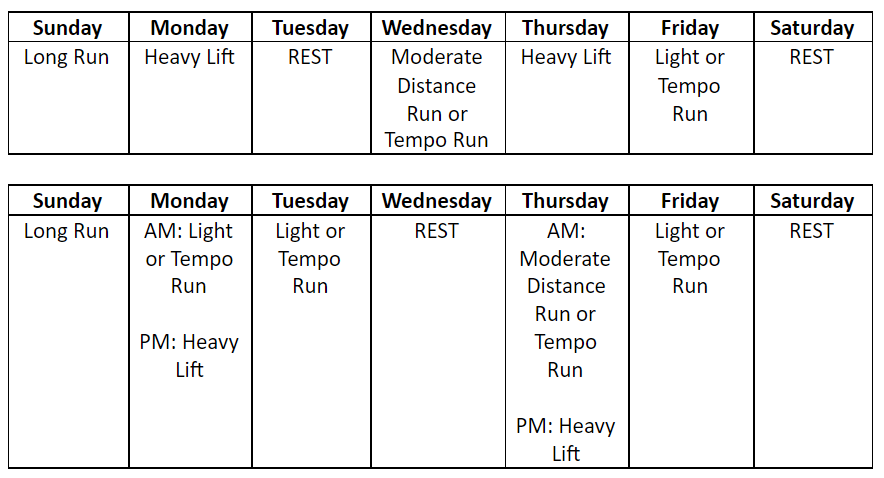


One question we get frequently asked is how to incorporate strength training into a running schedule. From an early age of training, runners are not taught to have a solid strength training program along with their mileage. Starting in middle and high school, other sports have priority, and runners don’t learn how to balance the stress of aerobic (cardio) and anaerobic (resistance) training. They also may never learn proper form and never feel confident to pick up heavy weights in the gym. Fast forward to adulthood, these runners have missed out on the benefits of strength training and how it can make you faster and lighter on your feet.
So WHY is strength training important?
Having strong muscles makes every stride and movement easier. Your muscles have to produce a certain amount of force to contract, but if you can not only move your bodyweight but EXTRA weight on top, that makes every step you take during running and every squat a sub-maximal effort. Your body learns how to move more efficiency under that extra load. You’ll feel lighter on your feet and stronger doing everyday activities like carrying groceries and going up stairs. Each step during running can exert up to 4x your bodyweight, so it only makes sense to prepare your body to handle those loads!
So HOW do I run and strength train?
The answer to this question depends heavily on what your current training looks like and what your goals are. A recreational 5k runner and someone training for a half, full, or ultra marathon will look drastically different, but strength training is equally important for all groups. For someone with a typical training schedule of 3x/week including a long run, tempo/moderate distance run, and short run, heavy lifting should be performed at least 2x/week, allowing for full rest days as well. If you run more than 3x/week, one option is to perform strength training on the same day as the run to ensure you can take a full rest days while adding more running days. Two sample schedules are attached here:
Of course, the days can be adjusted to fit your schedule, but there are a few things to notice in this schedule above.
So WHAT should be included in the workout?
If you only have a limited time to work out, here are the things you NEED. In general these CANNOT be bodyweight and need to be difficult, especially for compound lifts and accessory work where you are aiming for around an 8/10 effort with 2 repetitions left in the tank at the end of the set. If you are new to strength training, reaching this intensity level is likely new and takes some time to get comfortable with. Choose one from each category for a well-rounded program.
I recommend using an app like Strong, which allows you to track sets and reps over time to help you determine if you are making progress in your lifts. As you get stronger you’ll need to add weight to maintain an RPE (rate of perceived exertion) 7-8/10 effort on the compound and accessory lifts.
Remember what your goals are for running:
If you answered YES to any of those questions, you MUST have a strength training program! This is just a rough guideline of a program for strength training, and if you are interested in training we can recommend some great programs in town or can work with you to find the best training for you. Reach out to us at frontdesk@motionrxhealth.com or at 904-414-3796.


2


0
Comments :
Samuel Palmer
2 years agoI've been asking this question in my head for a long time- thanks!